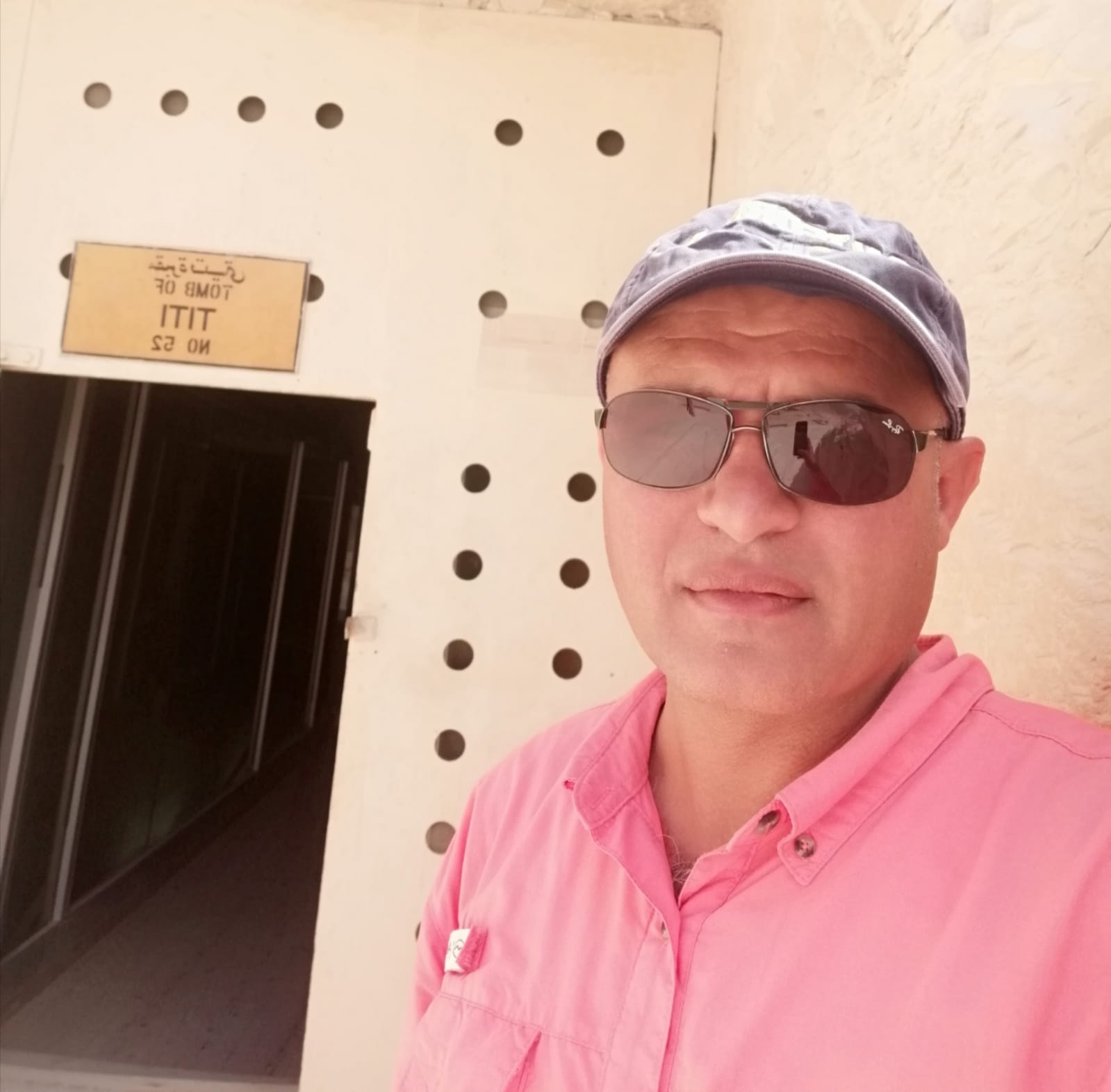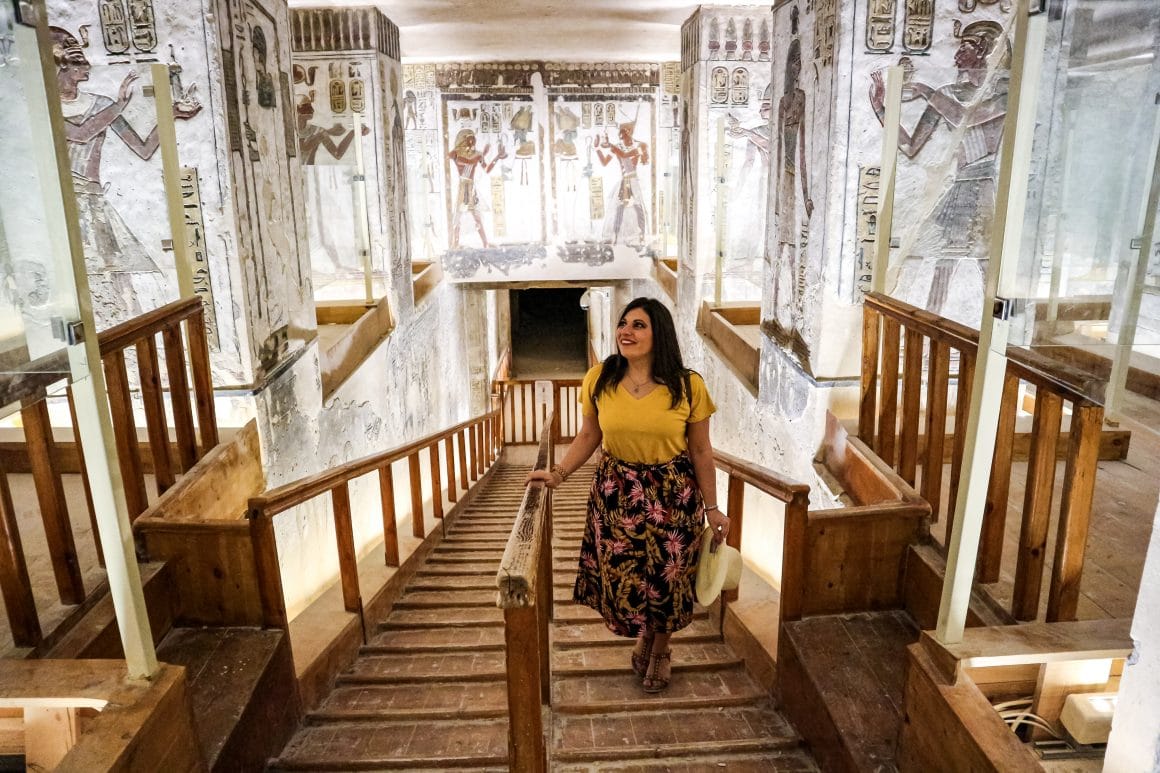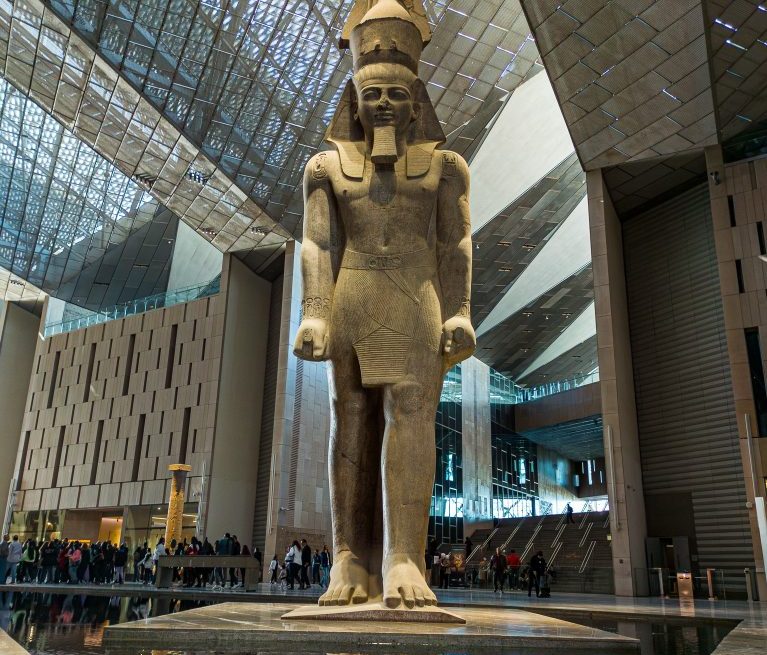The city of Luxor, or the “City of Civilization”, or the “Open Temple” is one of the most important tourist cities in Egypt, as it is as old as history itself. Wherever you go in Luxor, you will find traces of a great civilization, and why not? It is “Thebes”, the capital of the ancient pharaonic state, and contains the most important pharaonic temples and monuments.
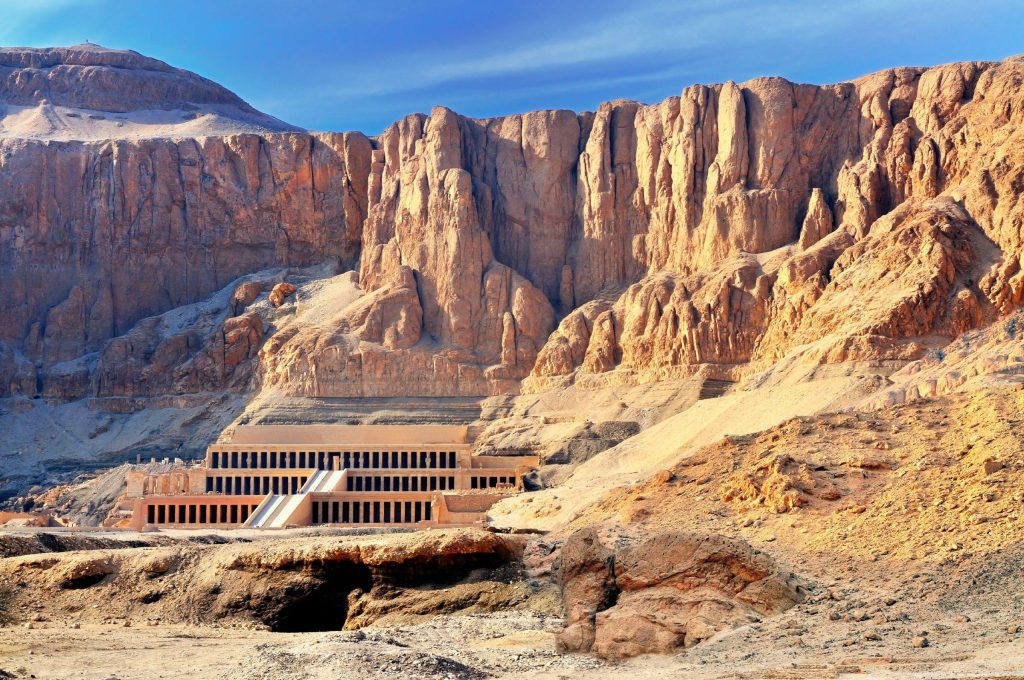
The city of Luxor not only attracts culture and history enthusiasts with its huge cultural heritage, but at the same time offers tourists many surprises, the most important of which are the cruises in Luxor on the Nile River, which divides it into two halves. , and enjoy the most beautiful panoramic landscapes, as well as hot air balloon trips that give you the most beautiful view of the city. The city from above, and of course we must not forget the stagecoach ride, the most famous means of transport in Luxor, and especially the mild climate in winter, which has made Luxor an unparalleled global winter hotspot.
Now let’s go together to explore the tourist treasures of Luxor and its most important monuments.
The most important attractions in Luxor
1- Karnak Temple – Luxor
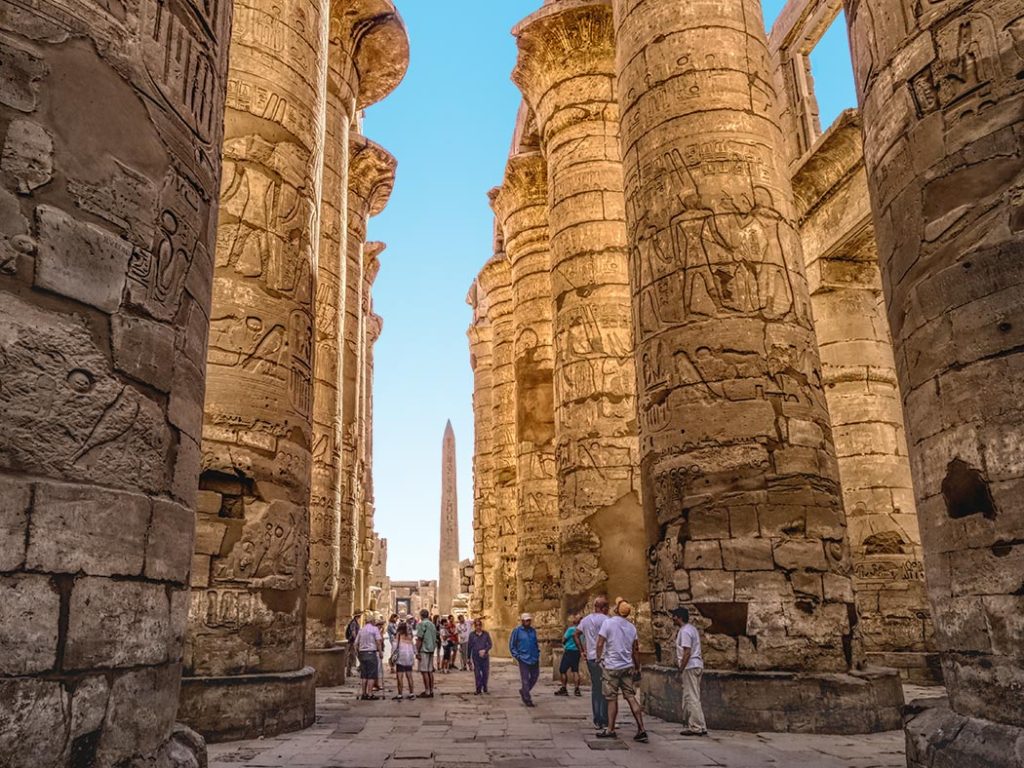
The Temple of Karnak is a complex of 11 temples, dating back more than 4,500 years. As the oldest place of worship known to history, the Temple of Karnak is one of the most important archaeological monuments in Egypt and the most famous in the world.
The construction of the Temple of Karnak continued for about 2000 years, on a total area of about 46 acres, to worship the god “Amun Ra”, his wife “Mut” and their son, the god “Khonsu”. The construction of the Temple of Karnak began from the inside of the Holy of Holies, then towards the outside, where the largest pillared hall in the world is located, which contains 134 columns, then the entrance to the temple, which is the famous Street of the Rams.
One of the most beautiful events at the Temple of Karnak, considered one of the most important monuments in Luxor, are the sound and light shows that take place there at night and tell its history in more than one language.
2- Luxor Temple

The Luxor Temple is one of the most important temples on the East Bank and is located near the Temple of Karnak. Its construction dates back to the Middle Kingdom, by order of King Amenhotep III. To serve as a home for the god Amun Ra.
The Luxor Temple is notable for its enormous structures, which begin with its great gate and two statues of Ramesses II seated on either side of the entrance, and two obelisks, one of which is in its place, and the other has been in the French temple capital, Paris, since 1836 AD.
Next is the huge monument of Ramesses II, 65 meters wide, then we will find the huge corridor consisting of two rows of large papyrus columns and many characteristic buildings and rooms.
The Luxor Temple is also historically famous for what is called the “birth room”, which was one of the main reasons for the construction of the Luxor Temple itself, until King Amenhotep confirmed his legitimacy to rule by proving his descent from the god Amun.
3- Mortuary Temple of Deir el-Bahri Temple of Hatshepsut
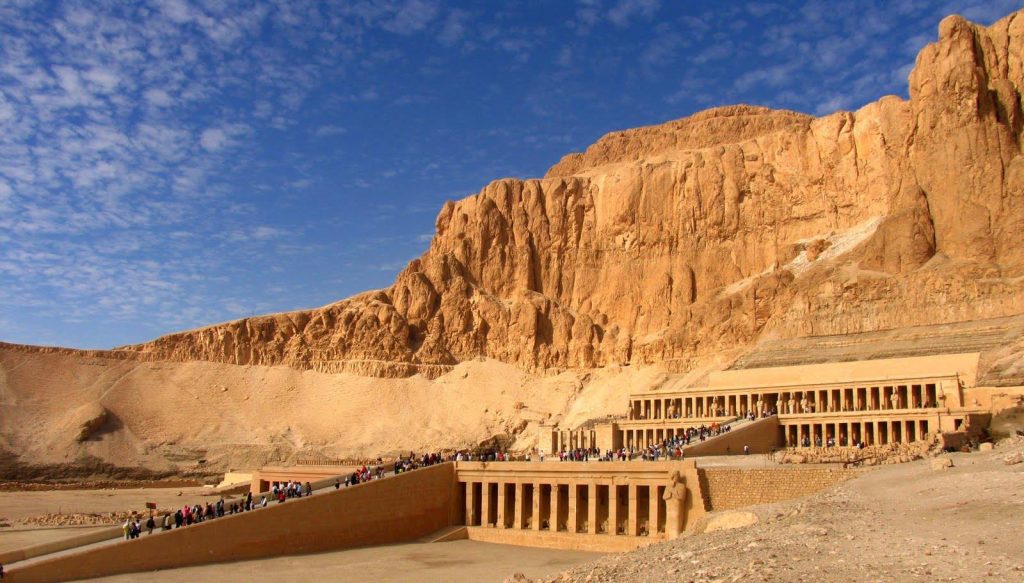
The Temple of Deir el-Bahri or Temple of Hatshepsut deserves the title of the jewel of the temples of Luxor, as it is the largest and most important funerary temple of the era of the Pharaonic state. Tourists come from all over the world; To enjoy the grandeur of its unique architecture.
The temple was built at the bottom of a rocky slope in the area of Deir el-Bahari, one of the most important archaeological areas of Luxor and located on the western bank of the Nile River. Worship of the god Amun, the god of the sun. The temple is composed of two parts, the external part is for the living and the internal part is for the dead.
The temple of Deir el-Bahari was designed on 3 levels, with open balconies, and built entirely of limestone. In front of the second floor are several wonderful statues of Queen Hatshepsut and the god Osiris. The temple is also notable for the historical inscriptions scattered on its walls, which still retain their colors despite the passage of thousands of years.
4- Valley of the Kings – Luxor
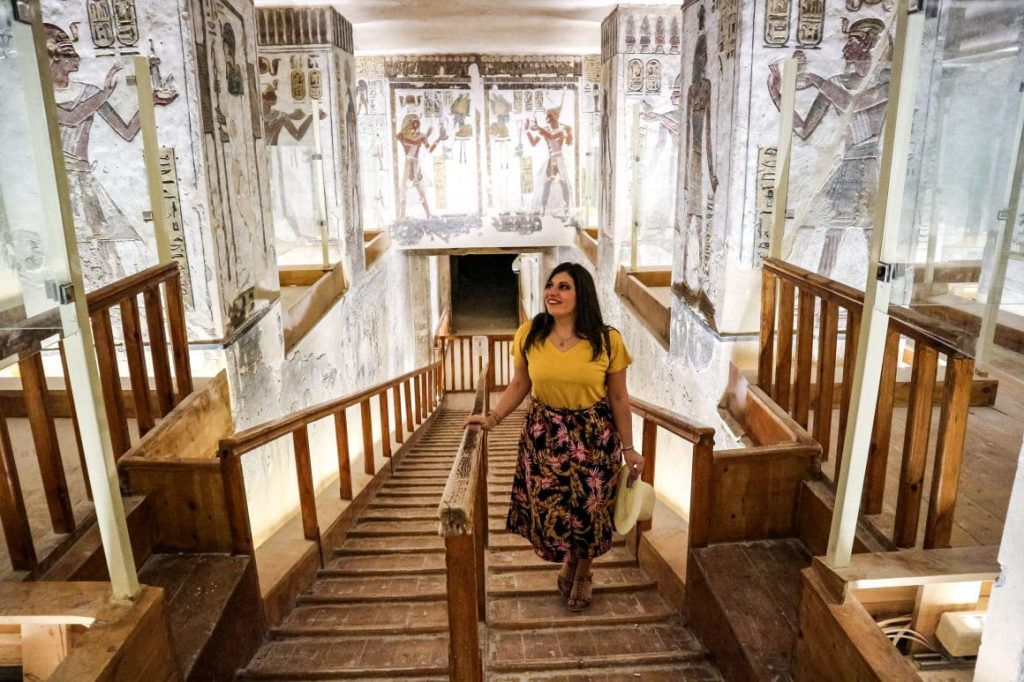
The Valley of the Kings is always considered by tourists at the top of the list of the most important tourist attractions in Luxor and Egypt in general and when you go there you will understand why thousands of people flock to this historical place every day. The Valley of the Kings in Luxor is a site that includes the most important royal tombs and some important figures from the entourage of the ruling families of Pharaonic Egypt.
The Valley of the Kings contains about 64 tombs, the most important of which is the tomb of King Tutankhamun. It is worth noting that the Valley of the Kings area is classified as one of the UNESCO World Heritage Sites. Because it contains pharaonic tombs with the most amazing wall inscriptions ever. It is said that this place was chosen for burial; Because of its proximity to the pharaonic temples.
5- Valley of the Queens
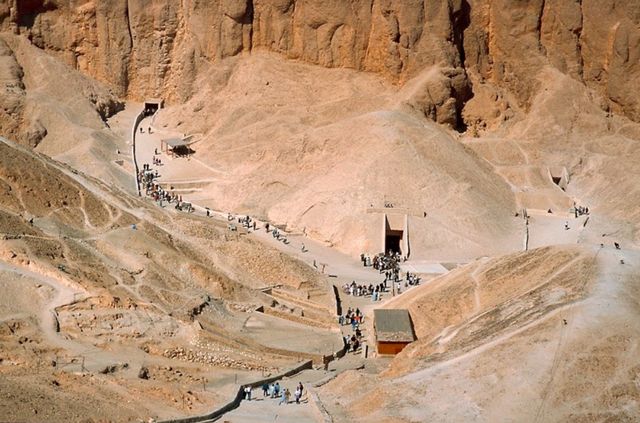
The Valley of the Queens is located in the far south of the western mainland and was built in the same architectural style as the Valley of the Kings and for the same purpose, namely to bury the women of the royal families, princes and princesses, and members of the noble class close to them. It is located near the Valley of the Kings.
The most famous tombs in the Valley of the Queens are those of Queen Nefertari, the beloved wife of Ramses II, a beautiful woman whose husband built her the most beautiful tomb out of loyalty to her. All the walls of the tomb are decorated with carvings and murals of incomparable beauty, depicting the queen, receiving guidance and direction from the gods.
6- Colossi of Memnon
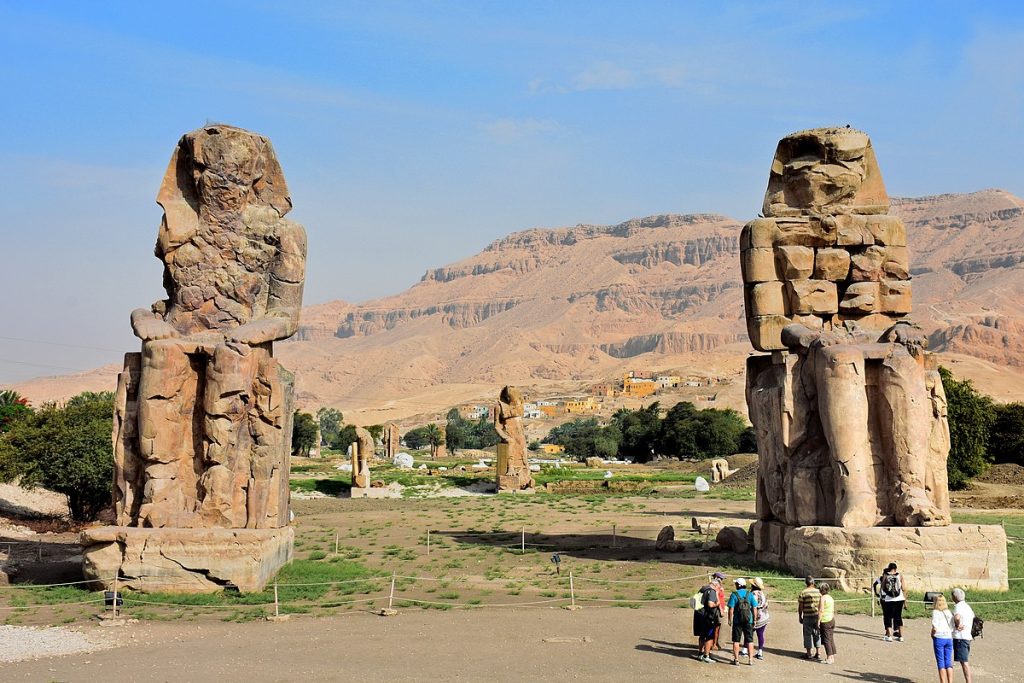
Considered among the most famous monuments in Luxor, the two statues of Memnon are located on the road leading to the tombs of the Valley of the Kings. They are the remains of an ancient temple built to commemorate King Amenhotep III, one of the kings of the 18th dynasty, considered one of the most powerful families that ruled ancient Egypt.
The two statues of Memnon are considered one of the most important tourist attractions in Luxor, where tourists want to stop and contemplate the greatness of ancient Egyptian history. They are called the “Giant of Memnon”, because the height of each statue is about 21.90 m. The name “Memnon” was given to them during the reign of the Greeks. Due to the breakage of one of the statues; The air passed through those cracks emitting a sound similar to a moan: it was said to be the moan of the mother of the hero Memnon, killed by Achilles during the Trojan wars.
7- Mortuary Temple of Amenhotep III

The mortuary temple of Amenhotep III is called the “Temple of Millions of Years” and is located in the area of Kom El-Hitan, on the west coast of Luxor, or what is called the “City of the Dead”.
It was built by King Amenhotep III, who is believed to have ruled Egypt for more than 37 years, on a vast area of 385 thousand square meters , but was badly damaged due to its low location. It was submerged by floodwaters and was also exposed to a strong earthquake in 27 BC. All that remains are the two statues of Memnon, and numerous excavations and excavations are currently underway on it. To explore the treasures of this enormous funerary temple.
8- Luxor Museum
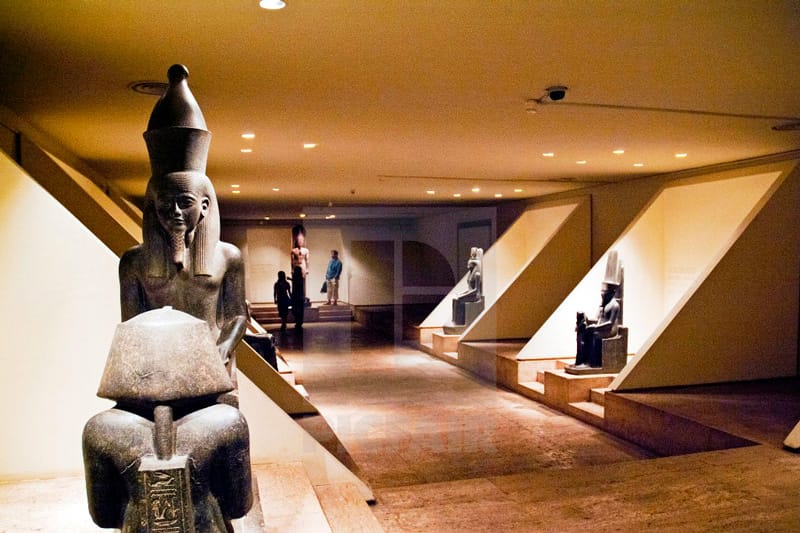
You can’t go to Luxor without visiting the Luxor Museum, which contains more than 376 rare artifacts and mummies of the most important Pharaonic kings of Egypt. The museum is located on the Corniche Road and is considered one of the most important tourist places in Egypt to learn about the Pharaonic history.
The Luxor Museum consists of two floors: the first floor contains many very important finds, in particular the granite head of the statue of Amenhotep III, the head of the goddess Hathor, which takes the form of a cow, the statue of the god Amun, and the Karnak Stele. The upper floor contains a hall containing many important statues. A room for mummies, a room for jewelry, utensils, some furniture and amulets.
9- Temple of Ramesseum
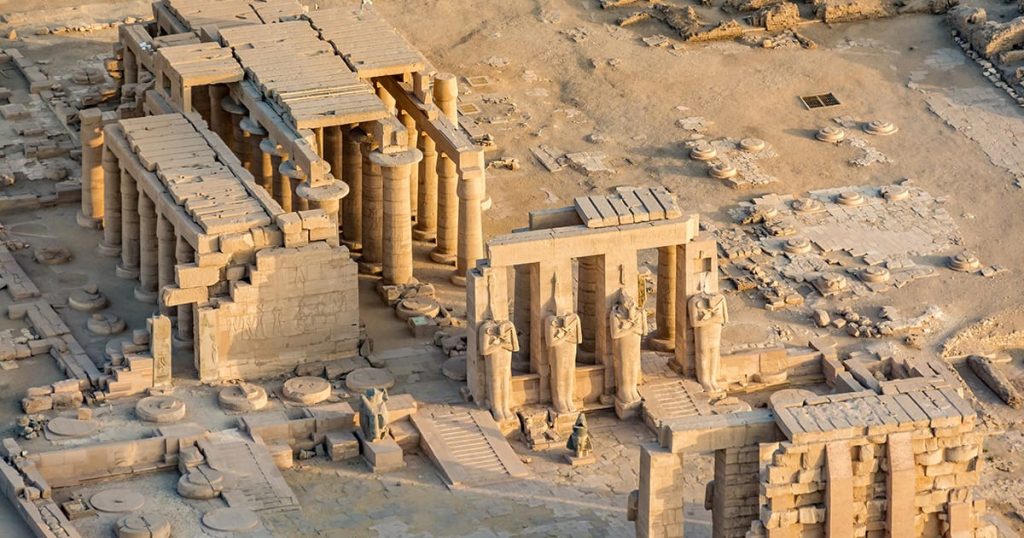
The Ramesseum mortuary temple is located in the western mainland and was built by King Ramesses II. To confirm his great royal status and in memory of his memory.
King Ramesses II loved to build temples in Luxor and Nubia, but the most important of these was the Ramesseum Temple. Because it contains huge statues of King Ramesses II, as well as images and inscriptions on the walls of the temple, which tell about the nature of life in that historical era, the most famous of which are the inscriptions that narrate the planning of the famous Battle of Kadesh, and its details, which took place between King Ramesses II and the Hittites, and ended with the victory of King Ramesses II. .
10- Medinet Habu
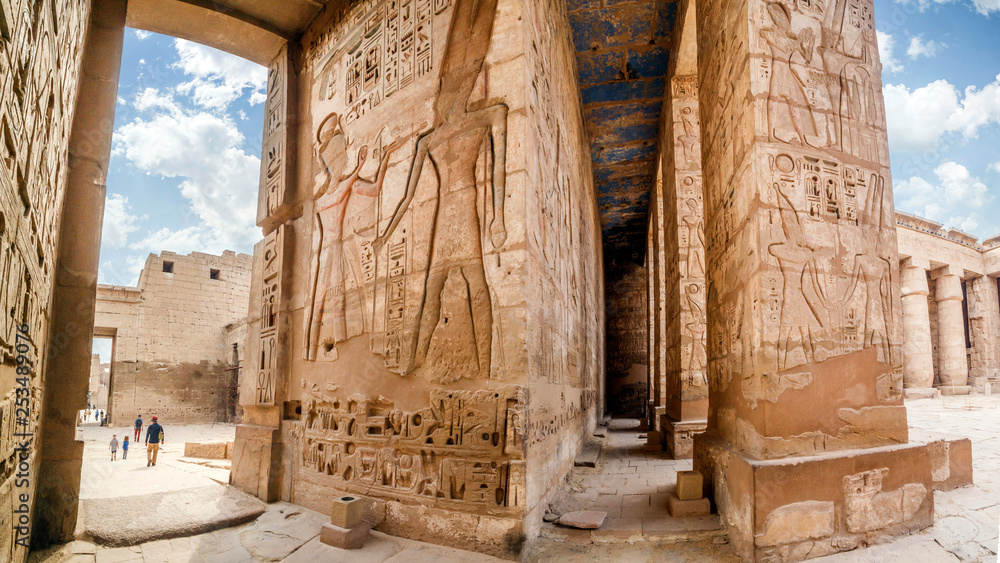
Medinet Habu is one of the most beautiful archaeological areas in the city of Luxor, built by King Ramses III. To perform funeral rites and worship the god Amun. The secret of Medinet Habu’s distinction in Luxor is its unique architectural style, similar to the architectural style of temples found in the ancient region of Syria, which the king saw during his wars there.
Medinet Habu was built on an area of 10 acres, and its walls and ceilings still retain their colors despite the fact that its foundation was built in 3200 BC. It contains the most important tourist attractions of Luxor, the most important of which is the Habu Temple, one of the largest fortified temples of the Old Kingdom, as it has two walls, an inner and an outer one, a hall for celebrations and the designated place for the priests, called the Holy of Holies.
11- Mummification Museum
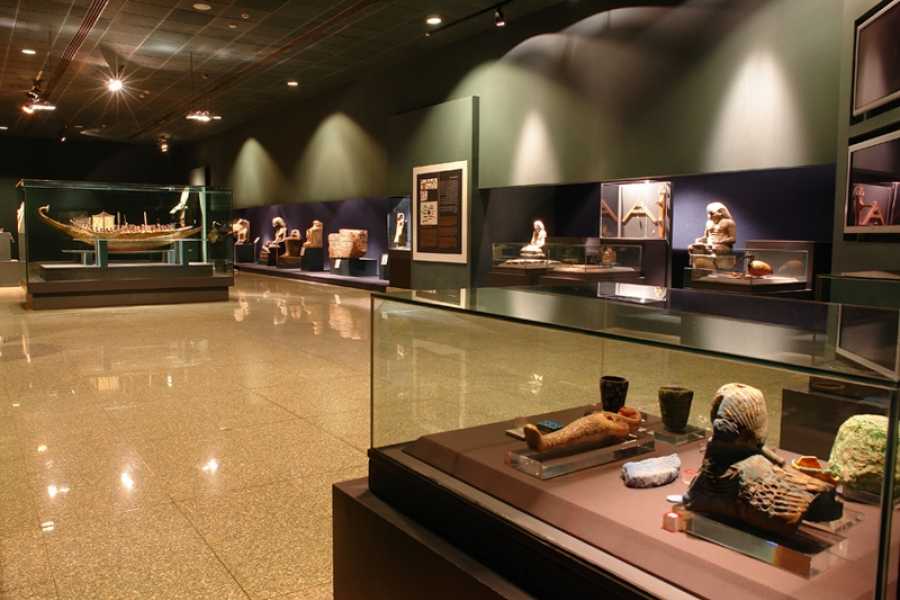
The Mummification Museum, one of the most important tourist destinations in Luxor, is located north of the Luxor Temple on the Nile Corniche. The goal of the Egyptian state was to establish a mummification museum in Luxor. Highlighting the techniques of the pharaonic art of mummification that amazed the entire world, as the ancient Egyptians applied them to many creatures, not just humans.
Thousands of tourists flock to the Mummification Museum every year. This has made it one of the most important tourist attractions in Luxor, as it displays many royal mummies and numerous mummified animals, it also has a collection of mummification tools used in ancient times and there is also a model of a funerary boat in the Museum. Transporting the body of the deceased across the Nile to the western land.
12- Deir El Medina – Luxor
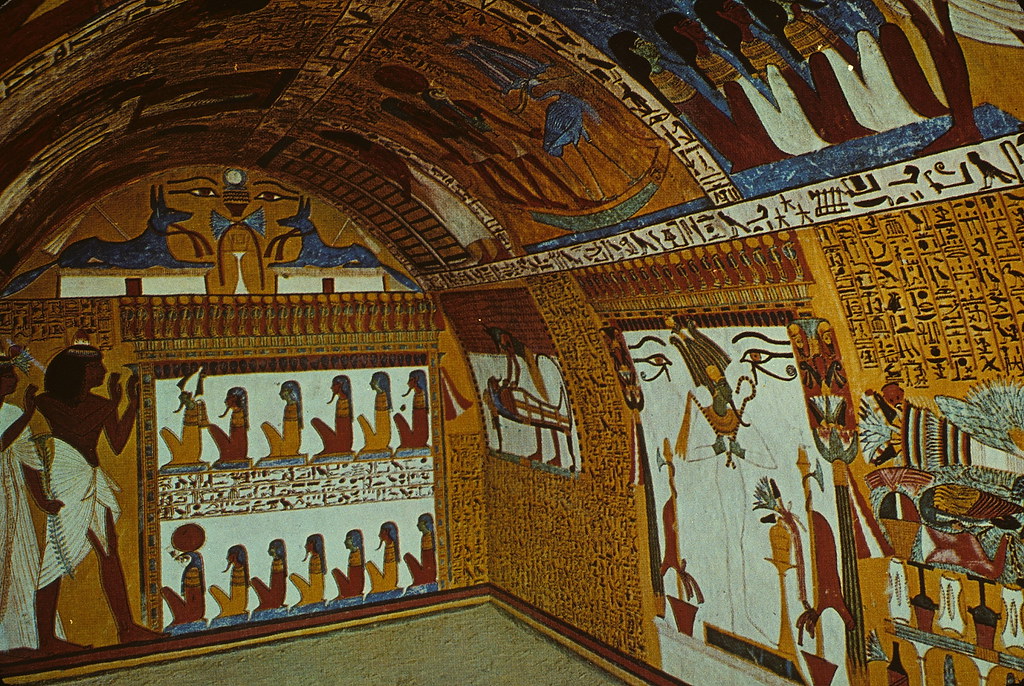
Deir el-Medina may sound like a strange name to your ears, because this historical place, with its distinct location between the Valley of the Kings and the Valley of the Queens, has not gained the same fame that these two sites enjoy, but what you do not know is that if it were not for this place, “Deir el-Medina”, these royal tombs would not have existed nor the pharaonic temples from scratch.
Deir el-Medina is an integrated residential complex, with pharaonic houses and ornate tombs; It was established for the workers who created and built the pharaonic city of Luxor, so the discovery of Deir el-Medina led to document the life of the workers in the pharaonic era, who came from the poor classes, and their number reached about 5 thousand people.
13- Tombs of the Nobles – Luxor
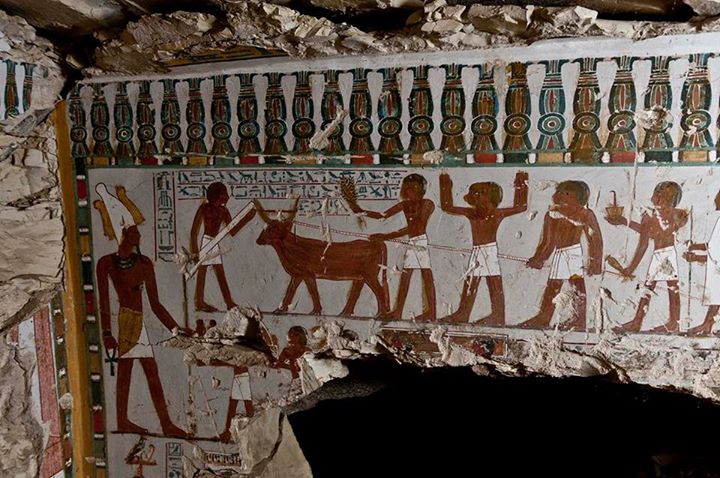
The Tombs of the Nobles date back to the Middle Kingdom and New Kingdom, and are the second most beautiful pharaonic tombs, after the tombs in the Valley of the Kings and the Valley of the Queens. Nobles here are senior statesmen, named after the kings who were eternally limited in the ancient pharaonic state.
However, in later historical periods, they were granted the legitimate right to immortality and their tombs were decorated with inscriptions, like the tombs of kings. This has resulted in thousands of magnificent tombs of nobles, but only 19 of them are available for visiting and they vary in terms of architecture, colors and quality of designs. In a way that makes it one of the most entertaining tourist destinations in pharaonic Luxor.


